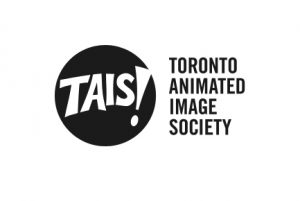Last updated on July 14, 2009
Friend to the site, and now contributor, Mark Cappello recently took the time to have a lengthy and probing conversation with Michael-Andreas Kuttner, formerly of Collideascope Digital Productions, the now defunct studio from Nova Scotia. Collideascope was the biggest shop on the east coast, and it’s closure came as a shock to the industry. Their site is still active, so you can check them out here. At the time, there was coverage of the closure here, on their blog, and from M-A himself over here.
It’s a long and interesting read, and I’ll spit it up into parts. Here’s the first (Mark Cappello in italics):
Collideascope seemed very ‘fortunate’ in closing when it did, basically at the head of the animation recession, what precursors were you seeing or hearing in the wider industry that helped inform your decision to close?
Yeah, there certainly were, and the recession didn’t actually come on all that quickly, Steve (Comeau, M-A’s business partner) is quite intimately involved with the CFTPA and he was starting to see a lot of signs of the downturn on the horizon on the national level, probably going back two years. Things were getting tighter from a policy standpoint with regards to the funders who are out there and we were getting a view of what the distribution landscape was looking like internationally. The saturation of animation on the market was really taking shape a year or two before everything started to collapse so we saw these things starting to happen and the news started to trickle in and a lot of the changes nationally and internationally with regards to policy were all part of the big picture we were starting to see come together. So, those bits of news and gossip were part of the overall decision to start winding things down.
Did the broadcasters give any indication that they were going to slow down as much as they have in terms of orders and productions?
No, there really wasn’t any indication of that, I wouldn’t say that the broadcasters were saying anything specific about commissioning less or anything like that.
They certainly have commissioned less though.
They have yeah, a broadcaster will always put the best face that they can in terms of how things are going. They are mandated to have a certain amount of original Canadian content programming as a term of their license, so they will obviously be as positive in their spin on how they’re contributing to the overall Can-Con cultural landscape. I think we had seen the broadcasters slow down in their orders anyway, but on top of that came the economic recession, which nobody could have predicted as being as fundamentally earth-shakingly bad.
I think what made it worse was the fact that the industry was SO busy right up until it was not busy at all, I mean it was like you needed to pull anyone off the street for a job because you desperately needed to fill desks, and then there was nothing.
Absolutely, it was two summers ago we were full bore on Delilah and Julius and Johnny Test in the studios, and we were running full steam ahead getting calls from other studios. At that point we had potential production work for another possible $14 million for the coming two years, and there were 120 people working at Collideascope at that point and the place was just rocking! But, everything sort of fell off, and that $14 million worth of stuff became only one service contract on Speed Racer which was basically a subsistence contract to keep the studio going in case the studio got busy again.
What about the market forces sending the work overseas again? Did you guys get any early indication that companies were going to try their hand at that again?
I started to hear things about that in December of ’07, I was hearing word back from people I knew at Studio B that they were starting to do it the ‘old’ way and do the layouts and key posing and boards here, then sending it off to an overseas studio who they were contracting to take care of the animation in Flash. It wasn’t at all shocking really, because I was just counting the days until the guys overseas started to really realize how badly we were eating their lunch and I mean the people over there are entirely capable.
They can buy Flash the program just like we can.
Exactly, and there are a lot more of them and the cost of living is a whole hell of a lot lower, so of course it was going to go back to that model. The only thing we really had going for us on this side of the pond was that we got into Flash first because we were getting beaten to shit the old way. When we switched to the new technologies there was a lag over there because they knew they could still employ 200 people in a warehouse studio for a hell of a lot cheaper than we can, and they didn’t realize how fundamentally it was going to change the landscape until we really started to eat into their profits.
Well Flash was like a ‘hail Mary pass’ for the domestic industry in Canada, I mean I was working in the industry during all that time where work was sent overseas, even the layout and pose. Flash saved my career, no question, there doesn’t seem to be another magic program in the offing that can do the work more efficiently and faster and look reasonably OK. I can’t see it getting much cheaper than budgets of $130k per episode.
Exactly, and past that if you want to make it cheaper it’s going to be something that is extremely automated, and it’s not going to be a question of the process getting better it’s going to be a question of viewers lowering their standards. Technically there is stuff out there where you can push a button and it will generate animation for you but it looks like shit, you will never see a program do art that’s what animators are for, you’re never going to be able to automate the art in the process.
This has always been a tough industry to survive in as a company, and it’s tough to imagine new systems and processes coming in and making a difference in your bottom-line as there is always such a thin margin to begin with. What advice would you give to existing animation companies in order to navigate the uncertain future of the industry?
I think that at least in the near term, survival is basically going to be dependant on being smaller and smarter. One of the things I said when we decided to close the doors on Collideascope was ‘we got too big to be small, and we were too small to be big’ so our only options were either to be bought by someone bigger or to collapse it all and be a tiny company again, for personal reasons Steve and I didn’t feel like going back to being a small boutique kinda thing anymore. There’s a lot of work in that, and we’ve done it, and it was fine for the time but we had things we wanted to do and we didn’t want to specifically keep on the legacy of being an animation company. We’re off and we’re doing different things now. The goal of any company, no matter what the company is, is to survive, and especially when times are tight don’t rest on your laurels and pine for the old days when you were able to have a studio of 20 or 30 people working on a couple of episodes for a larger company that was just farming it out. The main thing is to keep your principles covered, and if those key people were spending their time in management they may need to step back and get their hands dirty in order to survive. As far as the market is concerned, you have to look for things that are not necessarily just in the TV market anymore, the video game market is out there, and there is definitely demand for things more cinematic out there, as these videogame companies realize that you can help sell your games with cinematics and even traditional 2D art assets.
It’s interesting that you mention the struggle for mid sized studios, it’s almost as if you need to be a giant media conglomerate helping to control the market or a tiny niche studio in order to survive. It’s hard to imagine a mid sized company that has a small administration being sustainable as it’s hard to weather those 4-8 month gaps in production.
While we were running Collideascope our administrative staff was relatively small, there were really 5 of us who were running the day to day top level stuff. Even with that we calculated that we needed a minimum of 2 full series we’re animating going through the studio in any given year in order for us just to be around and pay ourselves.
Knowing the situation that animation companies currently face, what would you do, if anything, to change the Canadian production system, from tax credits, to distribution, anything in order to make things easier or better?
Hmmm, that’s a good question. There are issues with the Canadian system from a policy perspective, as far as how it’s funded through various governmental organizations especially the CTF (which is becoming the Canadian Media Fund), they basically change their rules top to bottom about every 3 to 4 years, which leads to an enormous amount of churn in the way the rules are structured. That change comes about usually because when one system comes around and gets implemented invariably there is some question as to whether the system is equitable enough to the regions or if it’s favoring certain producers or any number of questions. It’s a bit of a political hot potato spending government money and it’s got to be sent to different places and obviously Ontario is going to get the Lion’s share of the money because there are more people there and that does makes sense on a per capita basis. Those sorts of factors are involved, so you’re never going to be able to de-couple those concerns from the equation of getting a TV show done in Canada… otherwise it just comes down to more of a U.S. model, and when we work for people in the States it’s just a simple question of if we’re cost effective enough.
We don’t see a lot of work coming directly from the States do we?
No not much.
Why is that do you think, is it the fact that they are unionized or is it that we are not competitive enough with overseas?
I think it comes down to a couple of things. I think in the States there is a general sense that if you have an A-list show that’s being done, that only Americans can do it right. There may be some very good reasoning behind that, obviously Americans know what Americans like. When you have Americans come up and do co-production ventures in Canada it’s usually because of the tax incentives and government funds available. You know, I’m not going to criticize Americans for wanting to keep their stuff in their own country. Getting back to what I would change to make things better, I suppose one of the big things that has been one of the most challenging components in getting a show funded and financed is getting a Canadian distributor in place to sell the series internationally. Canada, being a small country, there are really not a lot of distributors around, and with the last round of industry consolidation that went on over the last 3-4 years there are definitely fewer distributors and as a result there are fewer distributors who focus on kids programming which is what 99% of animation is. So more access to a greater number of distributors who would be able to potentially put a little bit more advance money into a production budget was one of those things we often wished for.
Couldn’t you just get a distributor in the U.S. to join the production?
Nope, in Canada you have to have a Canadian distributor in order to access all the government funds and financing.
So you are stuck?
Yes, and the distributors knew it too, and as a result in many cases, especially as time marched on the Canadian distributors knew that they didn’t have to give you a production advance for example, as long as their name was on there they knew that they had that kind of leverage. We needed them more than they needed us, because there were any number of people knocking at their door asking them to come on board with another production.
It seems somewhat backwards though, because you would think that as long as you were producing quality, the distributors would be attracted to that quality.
All of television is only partially about quality and most of what television is about is who can do the business end of things best. It’s cooking up a good deal. The most important thing that you can do in getting a show going in Canada has to do with getting all of the ducks in a row at the same time and having it all happen at the same time so that you’ve got all the people together who want to actually put money into this thing and if you’re the executive producer you’re probably going to have between 5 and 7 different sources of different amounts of financing coming into the production (broadcasters, pre-sales, distribution advance, etc.). At the end of the day if it’s a reasonable and viable plan to execute, you put it back in front of all of them and say ‘Okay, is it on? Are you really on board now?’ and if it looks good enough they say ‘yeah’. On top of all that, you’re negotiating with the bank to get as favorable an interest rate on your production financing, so there are all these steps that you go through in order to get a show financed and together.
The rank and file animators have no idea that it’s that complicated. They sometimes decry the fact that they’re not working and they often blame the company for not getting a show together quick enough, but it’s really complicated, and the lack of understanding of the business side is sorely lacking in our animation education.
Yeah, it’s not something that obviously people are going to talk much about, and even if people on the floor are asking, the best you can tell them is “we’re working on getting a few shows going”. You’re not going to get into opening up the records and showing all the naughty bits of what’s gone on with getting these shows going. ‘A’ it’s boring, ‘B’ the animators don’t really want to know, they want to know if they’re going to have a job in 6 months, and I don’t blame them for that. It’s one of those things where you can’t say ‘Yes I know for sure you’re going to have a job in 6 months’ because as a producer you are as much at the mercy of the whims of the industry as you are if you are an animator, as a producer you just know a couple of weeks before the animators know, really. As a producer, you’re more in control, but its limited control. As a producer I can say “if this deal isn’t working I’m willing to give up profit or revenue to try and get the deal through” but there is only so much wiggle room you can have in that before you run the risk of eating into any ability to make any profit whatsoever and where you are instead as a producer paying to make someone else’s show. Which in some cases I have to say is tempting to do because what you’re hoping for in those cases is to keep your studio going for long enough that when the next show comes through it could look like it has a nice fat budget and you can re-coup your losses and keep your ‘A’ team around for the next opportunity. The problem is the other show may fall through, it may seem real, but as you get down to it, it just may collapse. So that’s a dangerous thing for studio owners to get into, this sort of cannibalizing themselves on the front end to get that good deal on the back end. It’s something that a lot of owners fall into because they’re hoping… it’s a whole industry built on hope.
And the crushing of that hope.
Haha exactly.
And I guess that’s a bad as place as any to break. More in Part II






Very good article, I’m glad we are talking about just how much work is needed to get a project started in Canada.
I can’t wait to read part II.
Interesting behind the scenes look. I have to say that I feel like the average animator knows that the companies aren’t to blame when it comes to lack of work, and that there are other factors in play. Well, I feel like the work force in Halifax knows it.
Everyone I know who’s animator gets it, and if they don’t then they just graduated from college and have no clue what to expect, but rest assured, they’ll learn through experience 🙂
This is the first time I have seen so little work in the 6 years I have been working in animation, there are some signs of a turn around but what do I know. It’s still the best job, where else can you get away with waking up late and drawing all day, puppeteering some little flash guy around to some cartooned voice.
Good interview! 😀
Its a common question that was asked in the industry by tha animators, “When is the next project starting?”, The answer was almost always, “A couple of weeks”, then 3 months later the project started or didn’t start at all.
So it was greatly appreicated when I asked Ron, “Should I look elsewhere while things get straighted away for the next project?” and being told “Yes,you have to make a living too”
Too many time in my past experiences with other animation companies, the next job was always just around the corner. So while we wait, we lived off almost nothing doing little projects here and there, all in the hope that we could work on a project doing something that we love.
So for that, I thank Collideascope for being fourthright!
M-A has always been so supportive of the animators and so willing to impart his knowledge and experience to anyone who is interested. Thanks again to him for taking the time to download his expertise for our collective benefit.